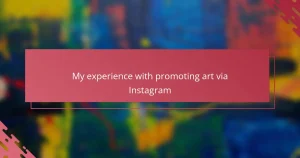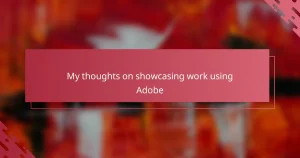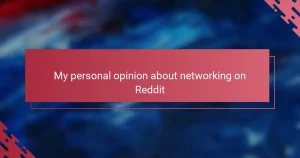Key takeaways
- An illustrator portfolio should be curated to tell a cohesive story about your style and skills, emphasizing clarity and emotional connection.
- Twitter is most effective for illustrators when used for authentic engagement, personal interactions, and consistent sharing of work and insights.
- Building and maintaining client relationships relies on genuine communication, follow-ups, and showcasing the creative process, fostering trust and collaboration.
- Measuring success on Twitter involves both quantitative metrics and qualitative interactions, adapting your strategy based on what resonates with your audience.
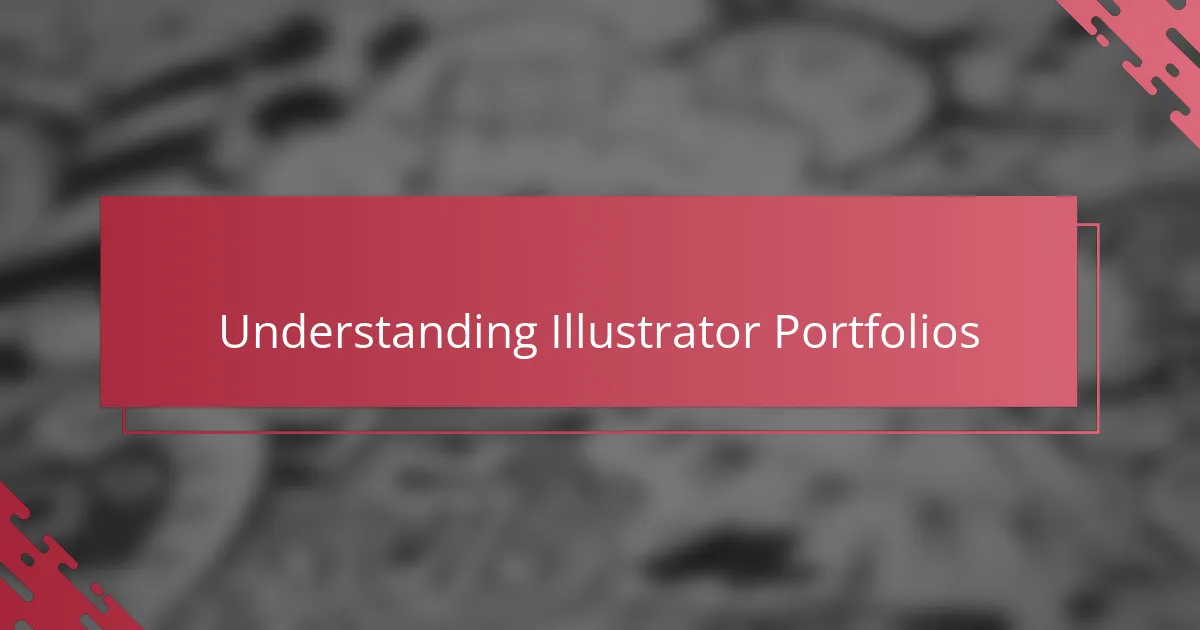
Understanding illustrator portfolios
An illustrator portfolio is more than just a collection of images; it’s a window into your creative soul. I’ve found that when I carefully curate my best works, it tells a story about my style, skills, and evolution as an artist. Have you ever thought about what your portfolio says about you before clients even say a word?
In my experience, clarity and organization make a huge difference. When clients visit your portfolio, they’re often pressed for time. Showing diverse pieces while keeping a consistent theme helps them grasp your abilities quickly and feel confident reaching out. It’s like having a conversation without words—how do you want to come across?
What always surprises me is how much emotion a portfolio can convey. It’s not just about technical skill; it’s about connecting through your unique perspective. When I see portfolios that evoke feeling, it reminds me how illustration is truly storytelling, and that’s what draws clients in every time.
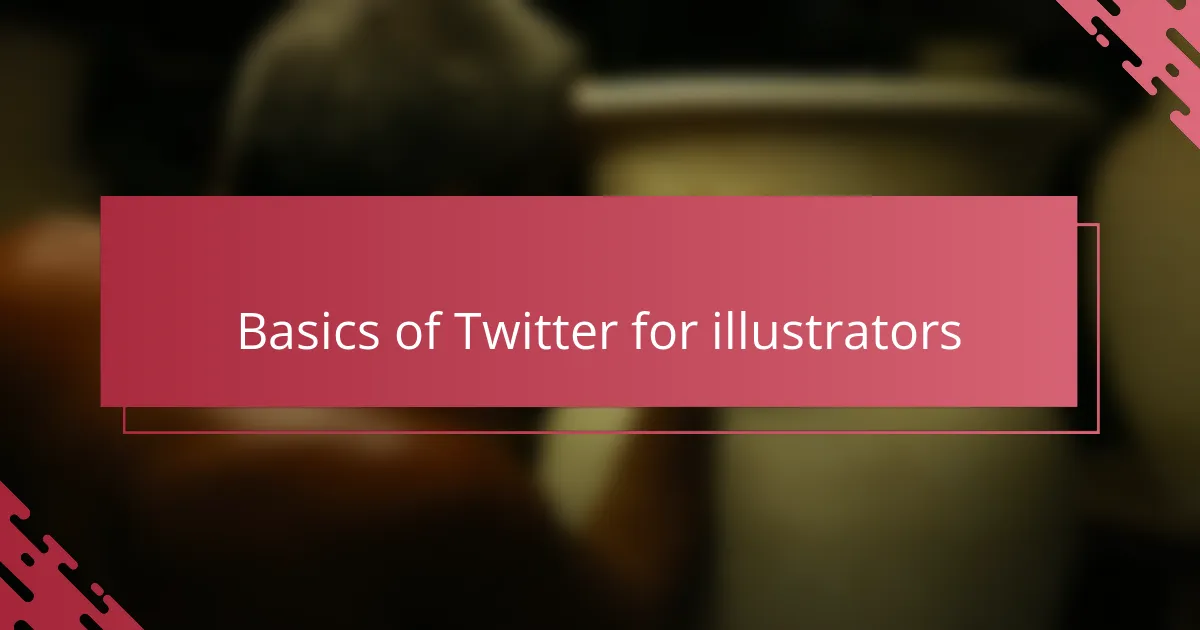
Basics of Twitter for illustrators
Twitter might seem overwhelming at first, but I’ve learned it’s really about being authentic and consistent. For illustrators like us, it’s a place to share work in progress, celebrate small wins, and engage with a wider creative community. Have you ever paused before tweeting, wondering if your style would resonate? I sure did, but showing up regularly made all the difference.
One thing I realized early on is that Twitter is less about broadcasting and more about conversation. Replying thoughtfully to others’ posts and joining threads helped me build genuine connections rather than just collecting followers. From my experience, these interactions often turned into real client relationships because they began with shared passion and trust.
Also, optimizing your profile matters more than you might think. I spent quite some time crafting a bio that reflects who I am as an illustrator and includes links to my portfolio. This small step felt like opening the door to opportunities—I started receiving DMs from people who appreciated the clarity and personality I presented there. Have you considered how your Twitter bio tells your story?
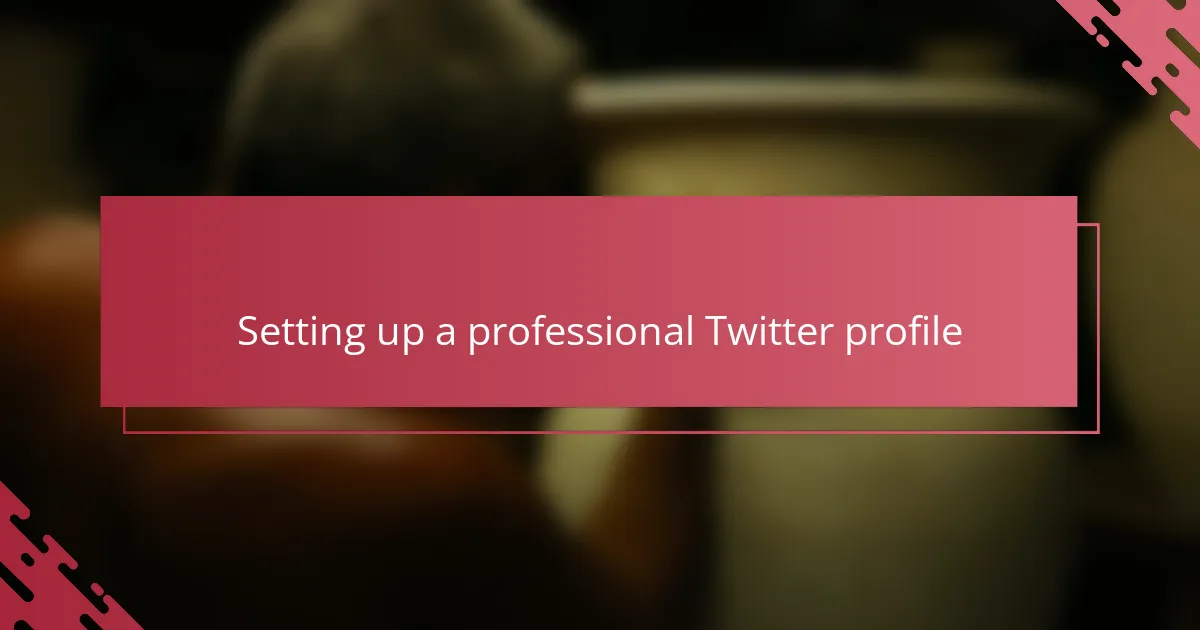
Setting up a professional Twitter profile
Crafting a professional Twitter profile was one of the first real steps I took to connect with clients. I remember spending hours choosing a profile picture that reflected my style—something friendly but polished. It wasn’t just about looking good; I wanted people to feel like they could trust and reach out to me from the get-go. Have you ever paused, wondering if your image says the right thing about your art?
Beyond the photo, I focused on writing a bio that felt authentic yet concise. I included keywords like “illustrator” and mentioned what kind of projects I’m passionate about. Adding a direct link to my portfolio felt like handing people a tangible piece of my work instantly. I found this small, clear introduction often sparked curiosity and encouraged clicks, which eventually turned into conversations.
What surprised me most was how important those little details were—the header image, the pinned tweet highlighting my latest projects, even the way I formatted my profile. Each element worked together to create a professional vibe that made visitors comfortable and intrigued. Have you ever thought about how your profile looks at first glance? It could be your strongest silent pitch.
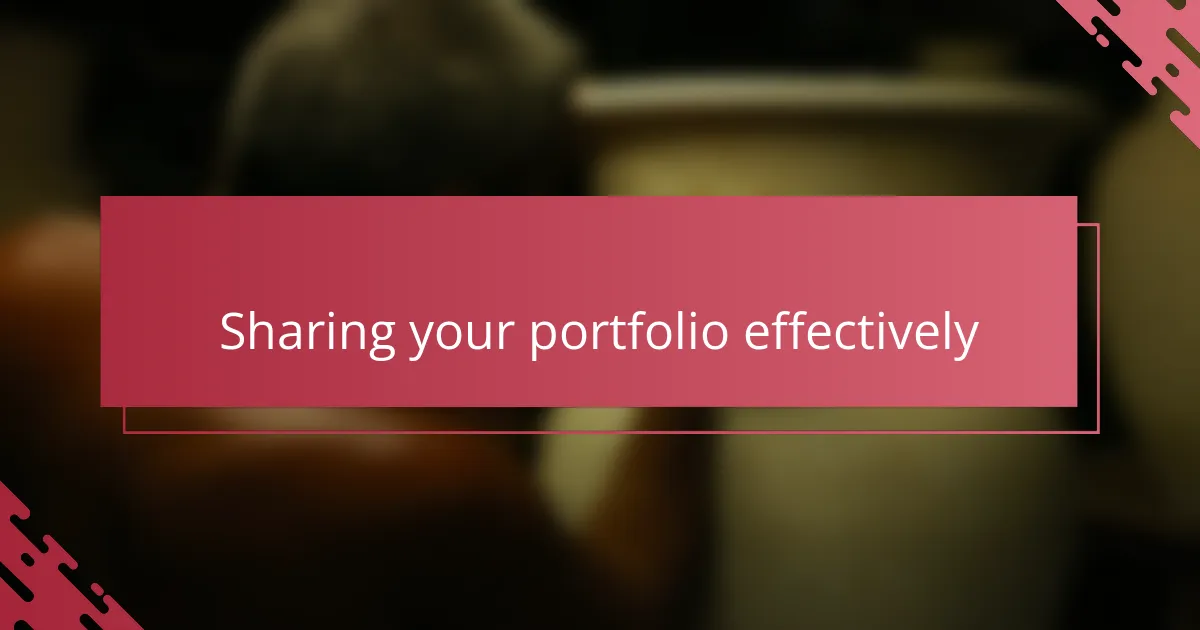
Sharing your portfolio effectively
Sharing your portfolio on Twitter isn’t just about dropping a link and hoping for the best. I’ve noticed that framing your posts around the story behind each piece invites curiosity and makes people want to click through. Have you tried pairing your work with a quick insight or challenge you overcame? It’s amazing how a little context transforms a simple image into a conversation starter.
Timing plays a subtle but powerful role too. Early on, I experimented with posting at different times and soon realized my audience was most active during lunch breaks and evenings. It felt like finding a sweet spot where my work didn’t get lost in the feed, and engagement grew naturally. Have you found your ideal posting rhythm yet, or are you still guessing when your audience is online?
Lastly, don’t underestimate the power of visuals that stand out in the Twitter timeline. I make sure to use high-quality images and sometimes add a splash of color or a consistent filter to create a recognizable style. In the crowded stream of content, this small effort helped me catch eyes and pull people toward my portfolio. How do you make your posts impossible to scroll past?
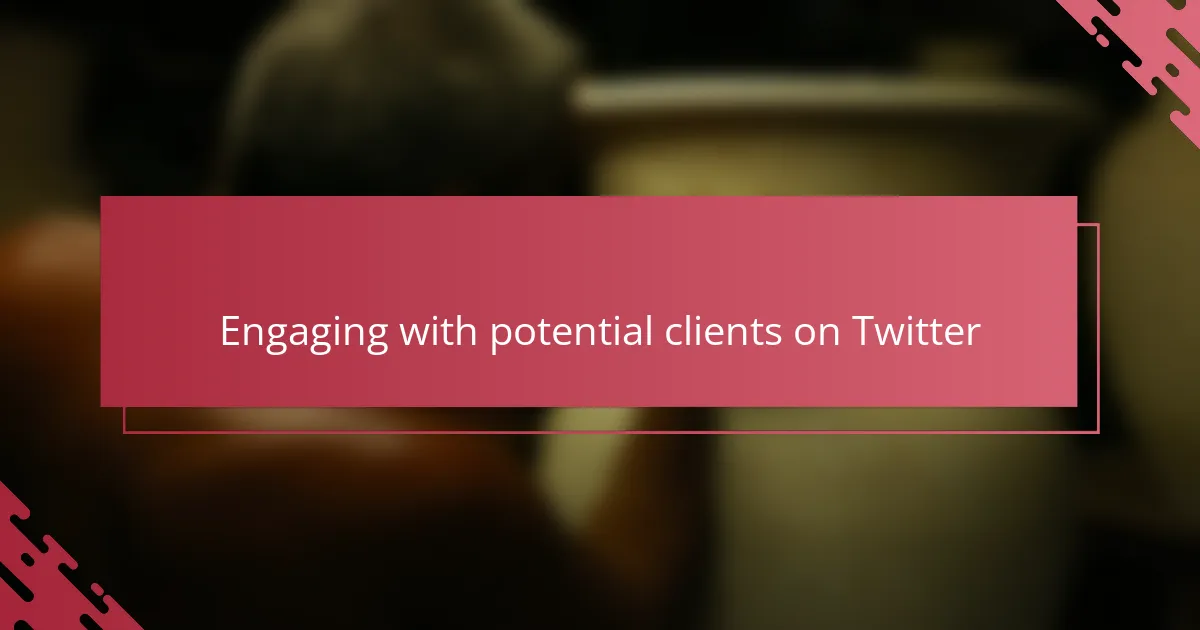
Engaging with potential clients on Twitter
Engaging with potential clients on Twitter felt daunting at first, but I discovered that starting genuine conversations made all the difference. Instead of just posting my work, I began replying to tweets from creatives and prospects, asking questions, and sharing encouragement. This simple shift turned my timeline into a lively space where connections grew naturally.
I’ve noticed that personalized interactions stick with people far more than generic messages. When I comment thoughtfully on someone’s project or offer a tip related to illustration, it often sparks follow-up questions or DMs. Have you ever experienced that moment when a casual reply blooms into a meaningful client inquiry? For me, those small exchanges built trust and showed I’m approachable, not just another account trying to sell.
Also, sharing updates about my creative process invites clients behind the scenes, making the relationship feel more human. I once shared a quick sketch and the story behind its challenges, and a potential client responded saying they appreciated the honesty and passion. It’s proof that when you engage authentically, clients don’t just see your art—they see the person creating it. How might this approach change your interactions on Twitter?

Building lasting client relationships
Building lasting client relationships goes beyond just catchy tweets or impressive portfolios. I learned early on that consistency in communication builds a foundation of trust. When clients feel you’re reliable and genuinely interested in their vision, they’re more likely to keep coming back.
One thing that surprised me was how much clients appreciate follow-ups and check-ins. After delivering a project, I’d send a brief message—not to sell more work, but simply to ask how the piece was working for them. That small gesture often opened doors to new collaborations and made clients feel truly valued.
Have you ever thought about what it takes to keep a connection alive long after the first handshake? For me, it’s about being present without being pushy—sharing behind-the-scenes updates, celebrating their successes, and listening closely. Those moments turn professional contacts into meaningful partnerships.
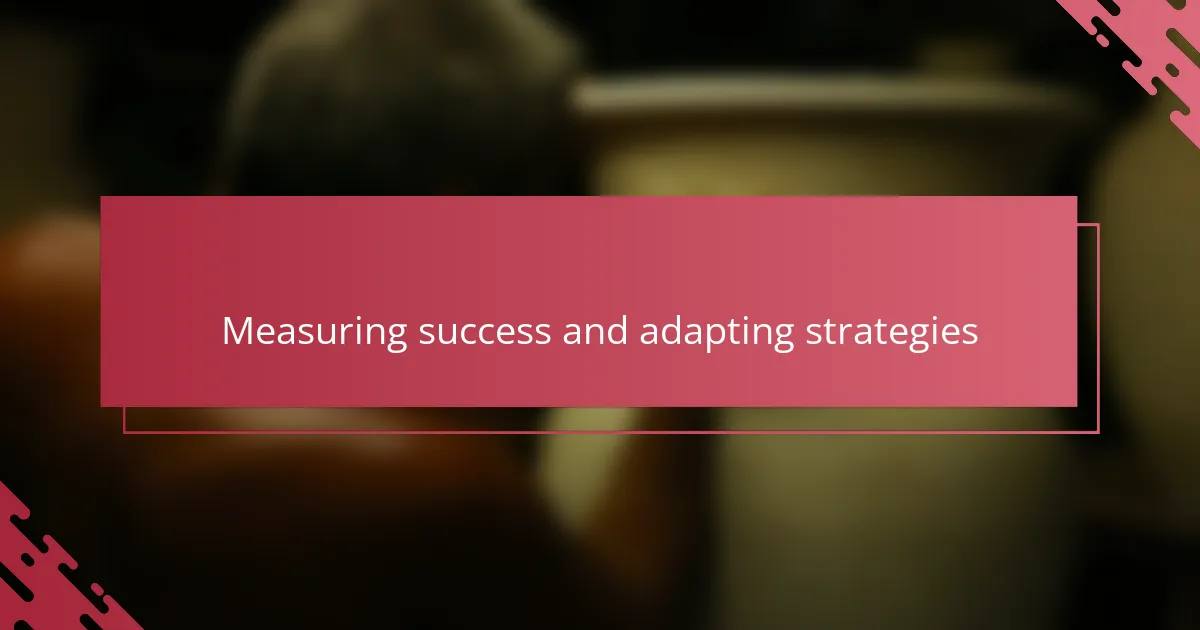
Measuring success and adapting strategies
Measuring success on Twitter has been a mix of tracking both numbers and feelings for me. I pay attention to metrics like engagement rates, clicks to my portfolio, and direct messages from potential clients, but more importantly, I gauge the quality of conversations that spark from those interactions. Have you noticed how a thoughtful reply sometimes means more than hundreds of likes? That’s the real win in building meaningful connections.
When I see certain types of posts getting more traction or clients reaching out more frequently, I don’t just celebrate—I pivot. For example, I once shared a behind-the-scenes sketch that unexpectedly led to several inquiries, so I started adding more of those sneak peeks into my posting routine. It taught me that adapting strategies based on real feedback keeps your efforts aligned with what clients truly want to see.
Sometimes the data surprises me and makes me question my approach. Am I focusing too much on broad reach rather than depth? By reflecting regularly and being flexible, I’ve learned to fine-tune my content and engagement style, which feels like navigating a conversation rather than shouting into the void. How often do you revisit your tactics to make sure they’re still working for you?
